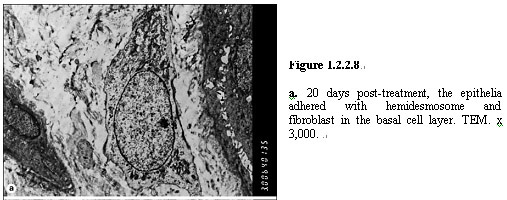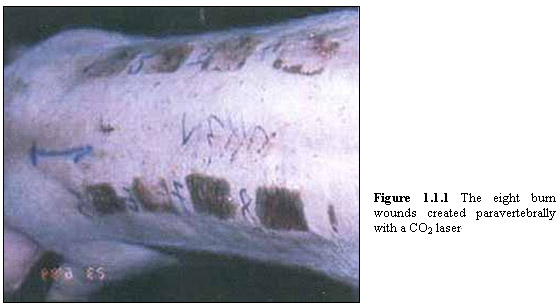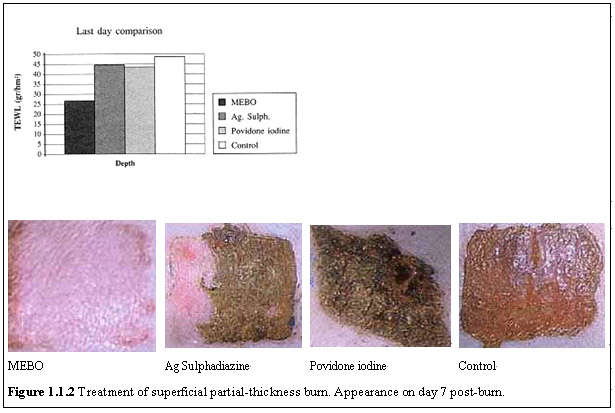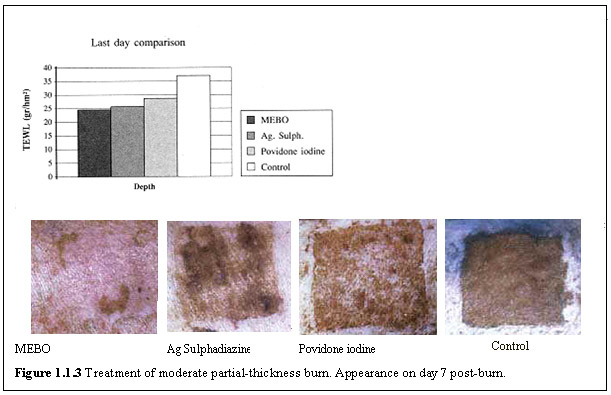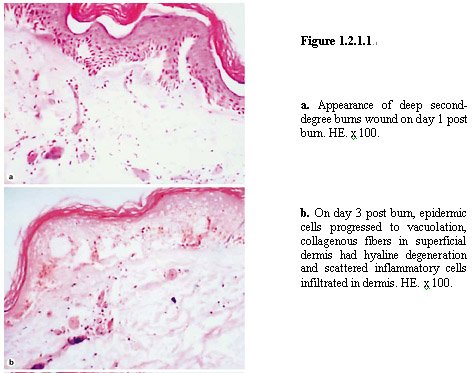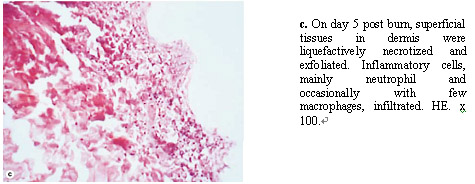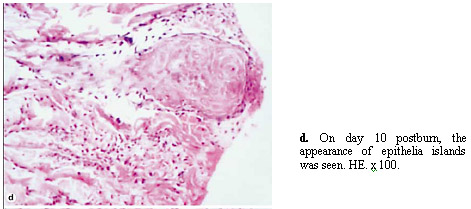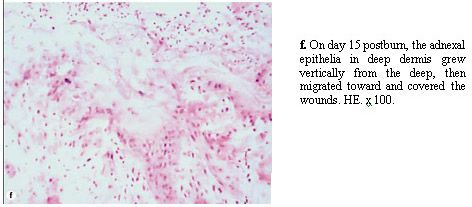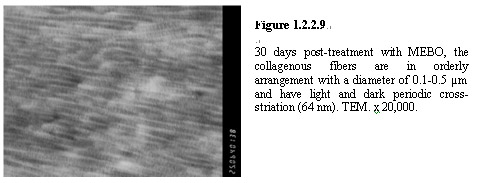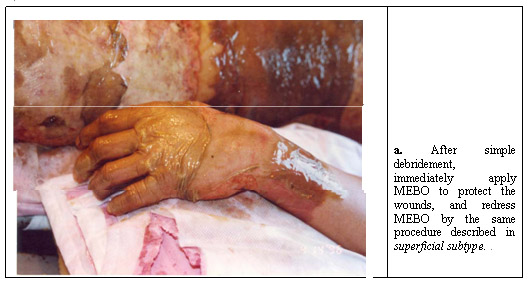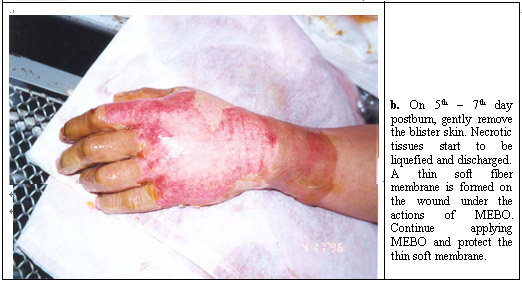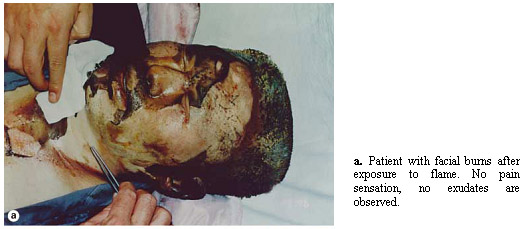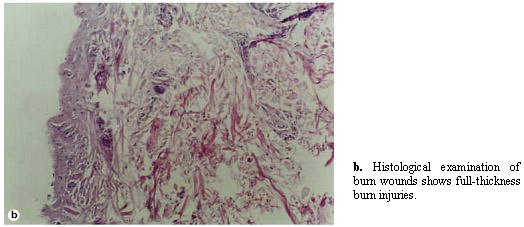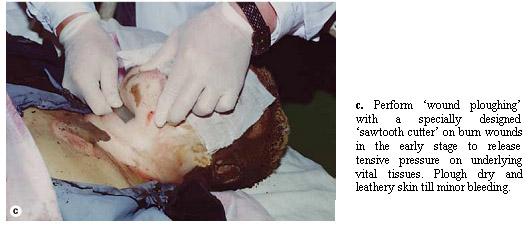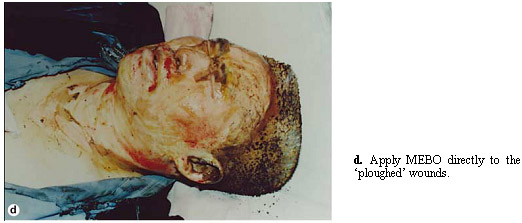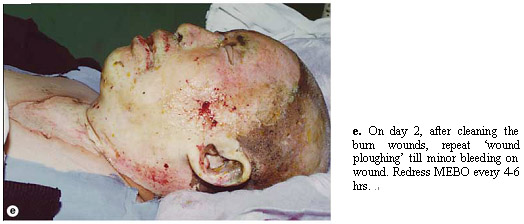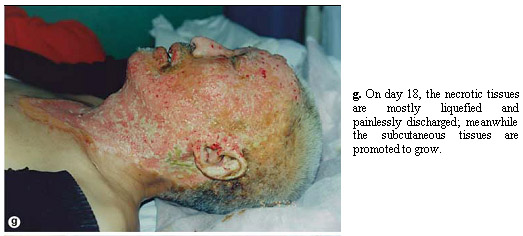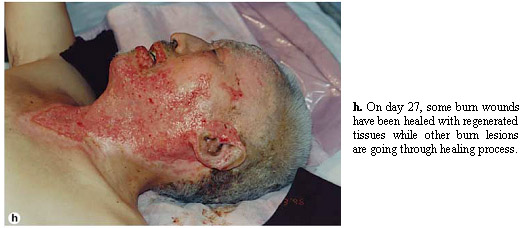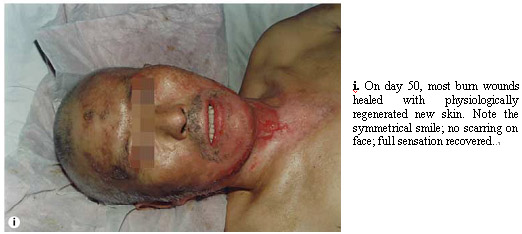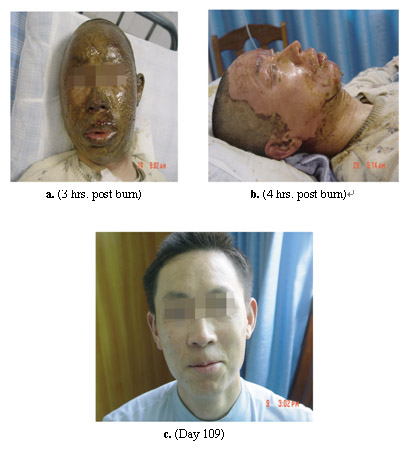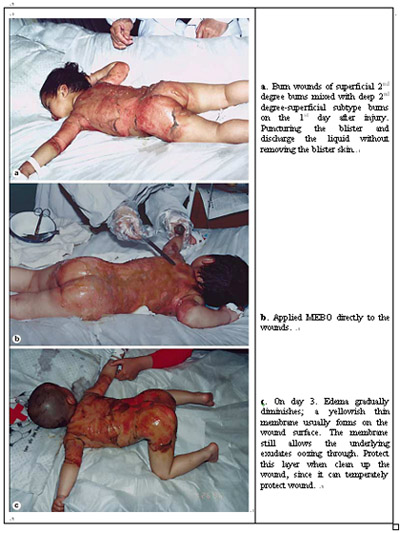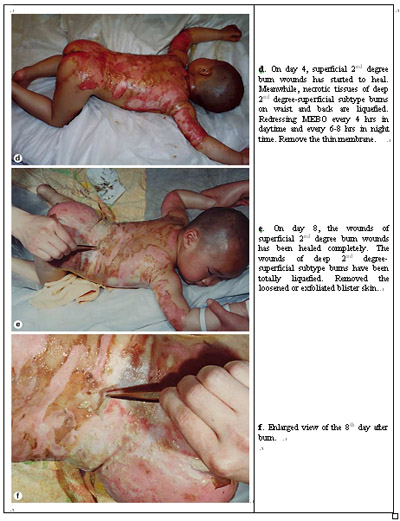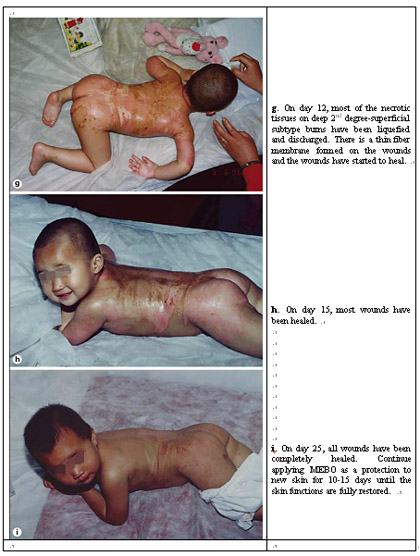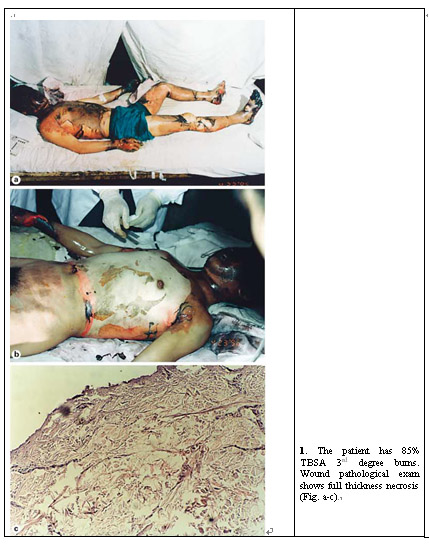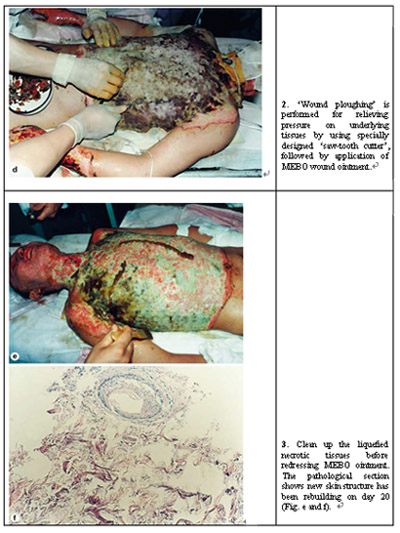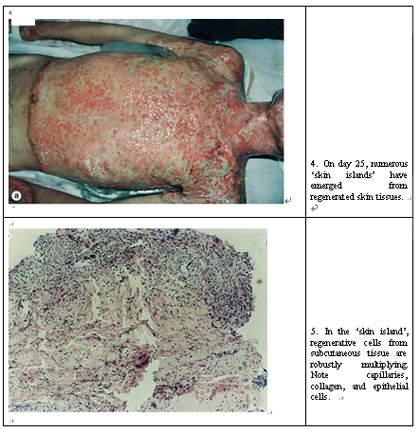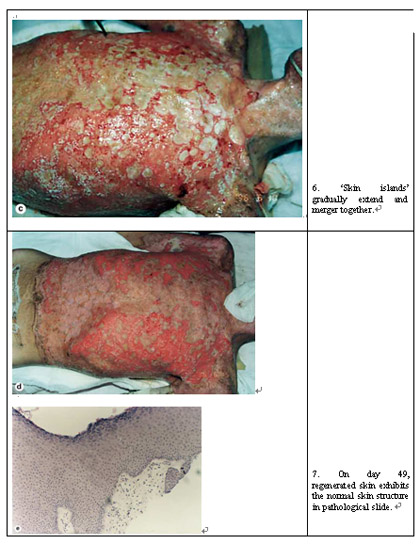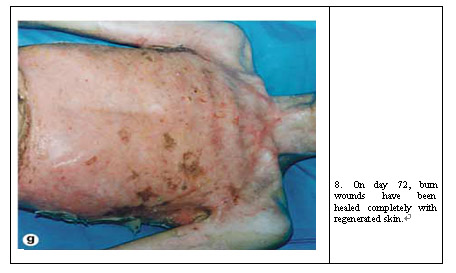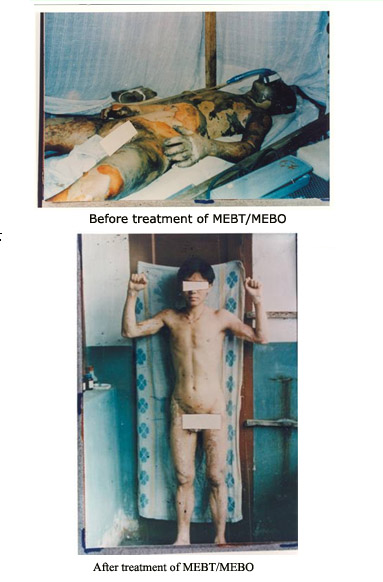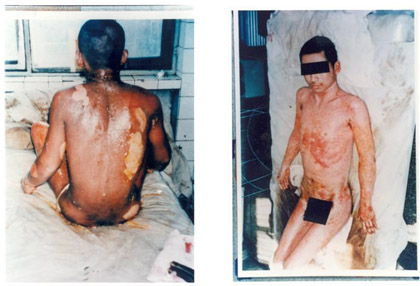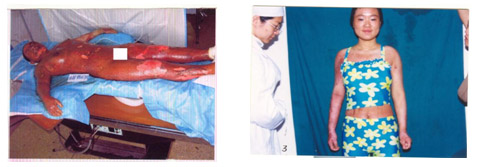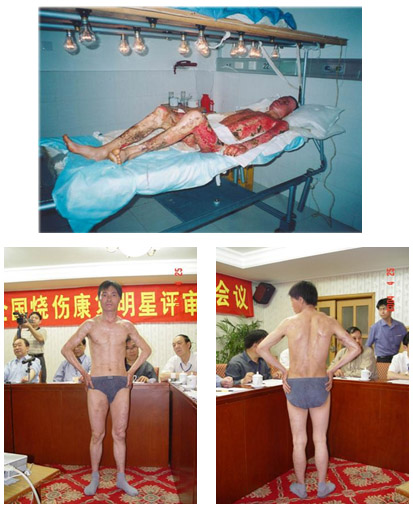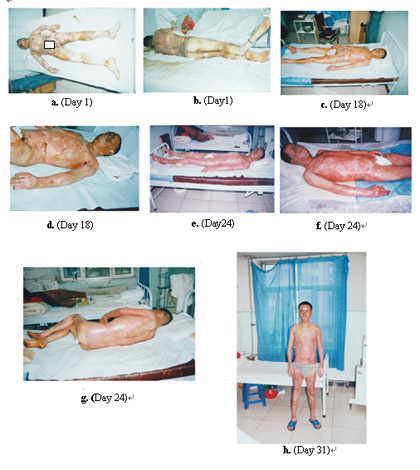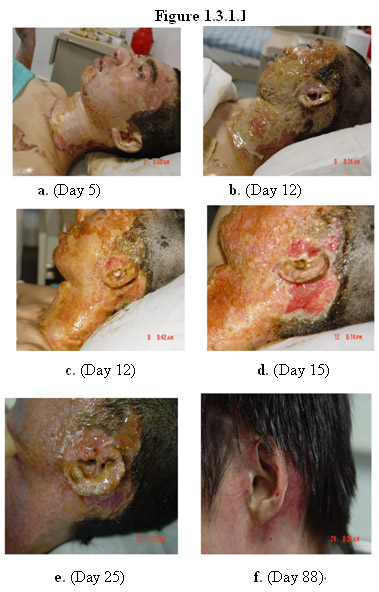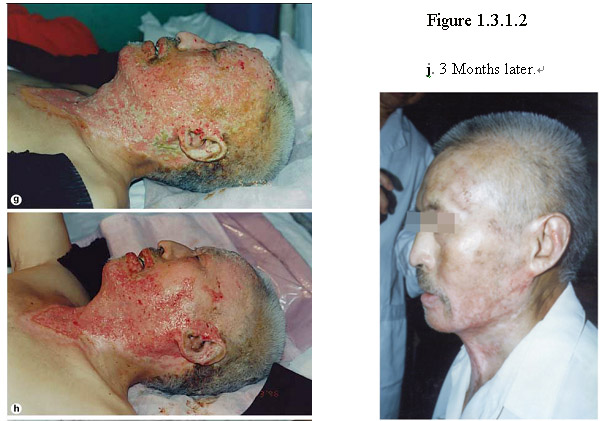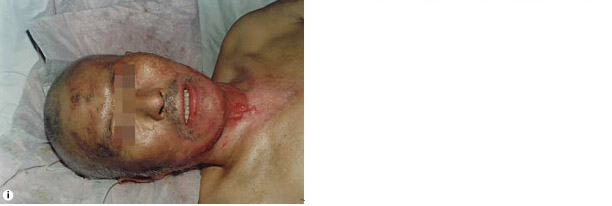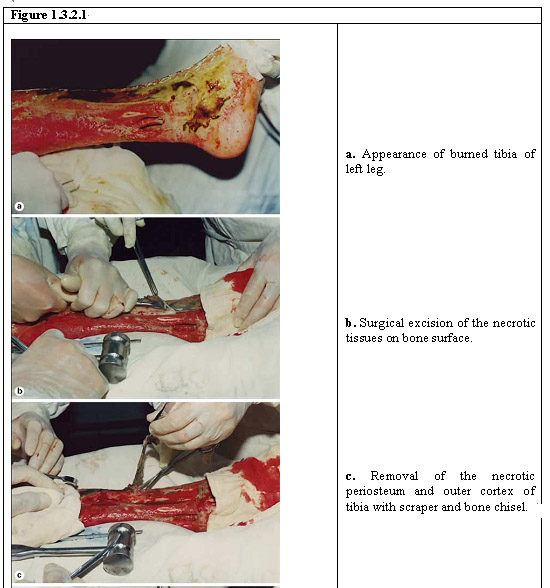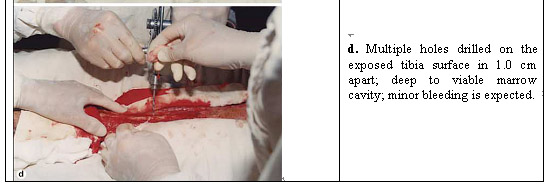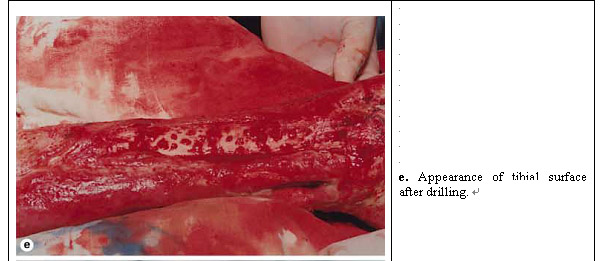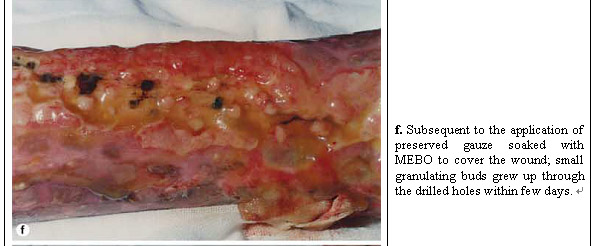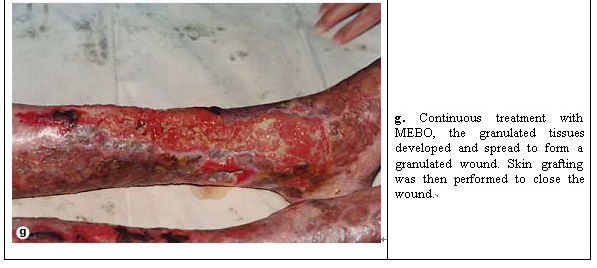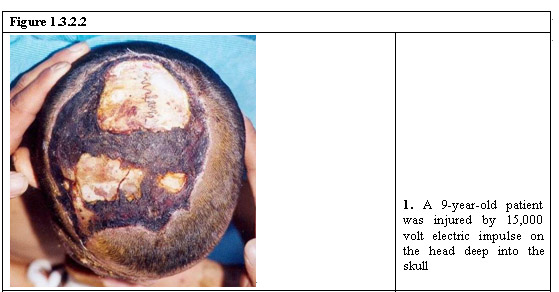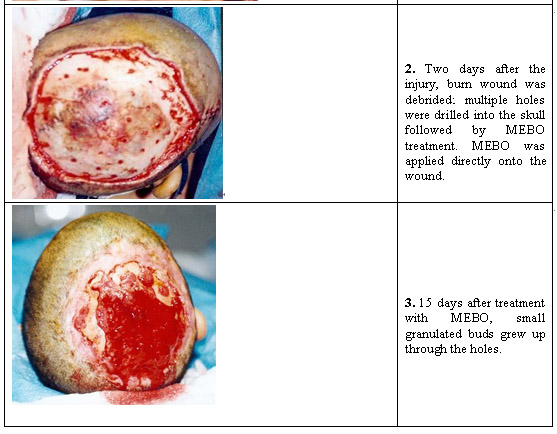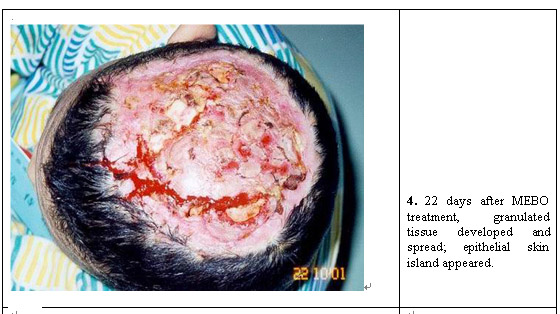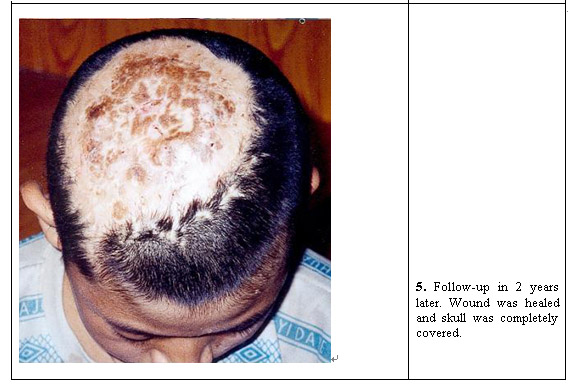As described in detail by Xu in “Clinical Procedure and Histological Observation of Full-Thickness Burns Treated with MEBO” in Burns Regenerative Medicine and Therapy, 1st ed., Basel: Karger; 2004. p. 111-114, MEBT/MEBO was used to treat a patient with extensive full-thickness burns in her lower extremities.
A 20-year-old female patient was hospitalized at 12 h after a gasoline fire burn and was diagnosed with 35% TBSA burn (15% deep partial-thickness and 20% full-thickness burns on both lower extremities). The epidermis was necrotic and detached and the dermal layer was degenerated and necrotic with a waxy yellow and waxy white appearance (Figure 1.2.2.1a). The pathological section examination of the sampled local wound tissues revealed a necrosis in full-thickness of epidermis and dermis, degeneration and structural disturbance of collagenous fibers in dermis, and microcirculation stasis (Figure 1.2.2.1b).
After admission, the patient was treated with MEBT/MEBO wound ointment to protect burn tissue. At 48 h postburn, the wounds began to liquefy and the liquefaction was complete by day 4 (Figure 1.2.2.2). The liquefied products were gently removed from the wound surface before MEBO ointment was reapplied every 3-4 h. Repeat biopsy at the same burned location was performed for pathological examination. The results showed massive granulation tissues among the necrotic epithelial tissue, a proliferation of newly regenerated epithelial cells with collagenous fibers, as well as the typical skin embryonic base (EB) (Figure 1.2.2.3a, b). After a 10-day application of MEBO ointment, embryonic-like epithelial tissues were observed in epithelial tissues sampled from the wound edge. At 20 days post-treatment with MEBO, the pathological examination of deep burns wounds tissue showed the presence of the newly formed intact stratified squamous epithelium. The epithelial cells of the superficial layer appeared normal. Appearance of the collencytes and microangium in the dermis layer was typical. On day 30 post-treatment, epithelial tissues showed a remarkable degree of regeneration (Figure 1.2.2.4a), and skin structure was virtually normal (Figure 1.2.2.4b).

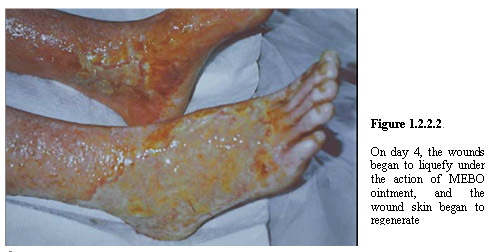
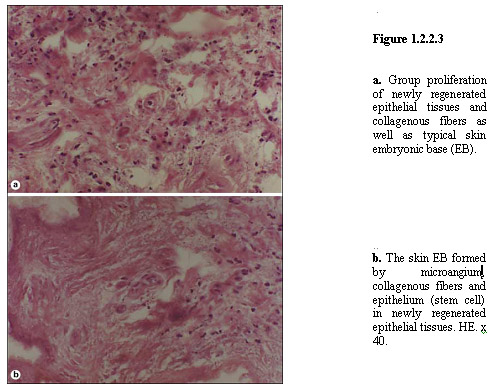
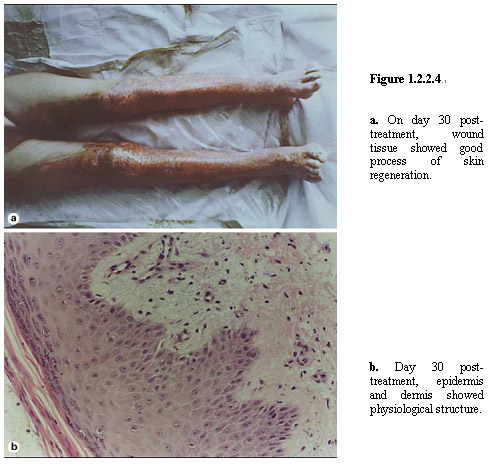
Twenty days post treatment with MEBO, immunohistochemical examination of the wound tissue was performed and the results showed the clear appearance of collagenous fibers in epithelial tissue and subcutaneous tissue (Figure 1.2.2.5).
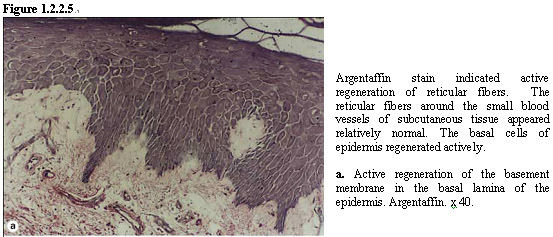
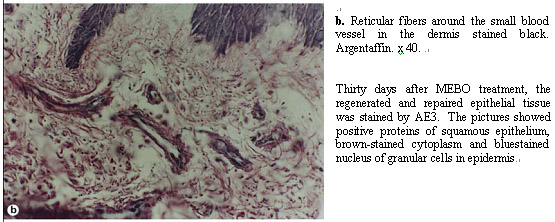
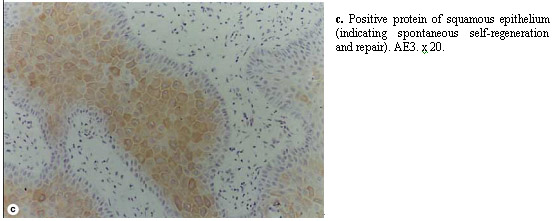
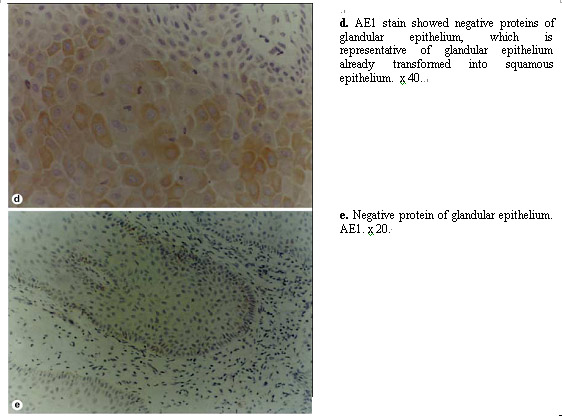
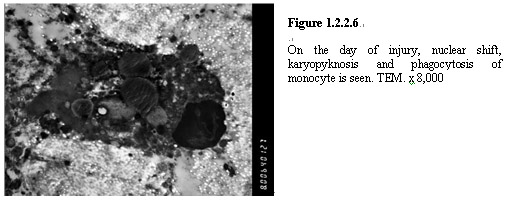

Twenty (20) days post-treatment, appearance of the hemidesmosome junction between the basal cell layer and epithelia was observed. Active mitochondria and RER in fibroblasts also appeared (Figures 1.2.2.8a-c). Thirty (30) days post-treatment with MEBO ointment, with the regeneration and repairing of epithelium almost complete, collagenous fibers were mature with a diameter of 0.1-0.5 µm and arranged in an orderly fashion (Figure 1.2.2.9). Light and dark periodic cross-striation (64 nm) was also observed. No pathomorphological changes of collagenous fibers such as distortion, helicoid (whirlpool) or cauliflower-like form were observed. After wound healing, functional exercises and physiotherapy of the lower extremities were performed. MEBO wound ointment was used continuously as regular skin oil. The patient healed and was discharged home on day 45 postburn.
